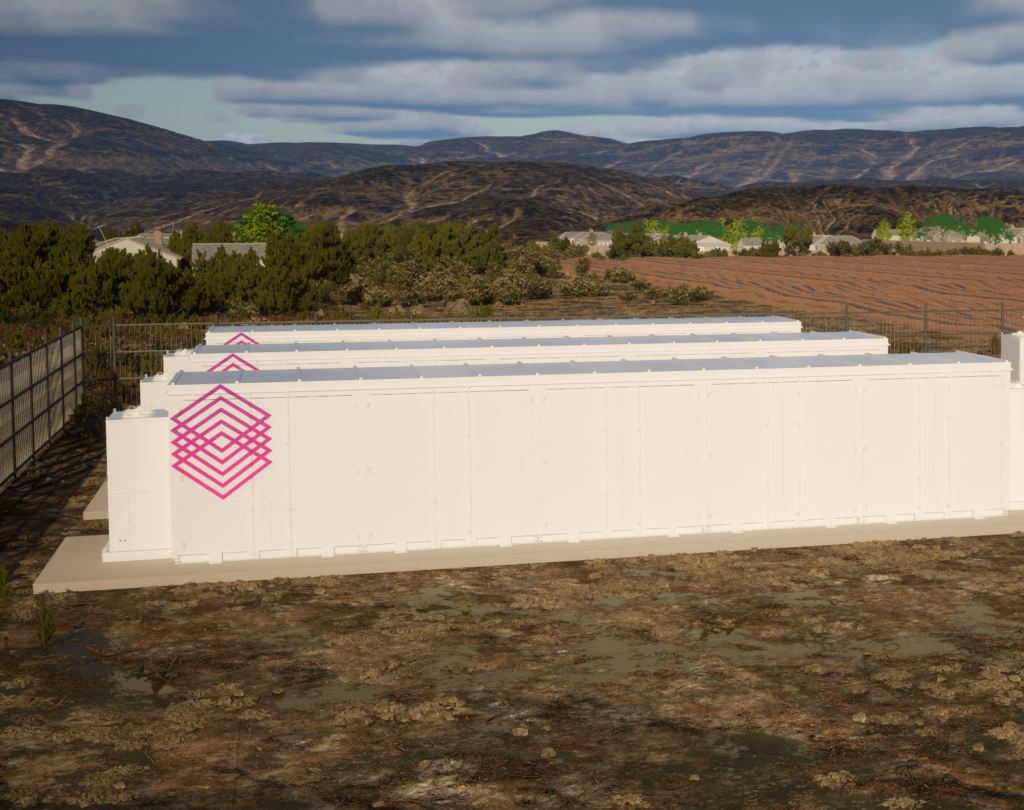Project Details:
Royalton, VT
4.9MW/19.8MWh
Nava Storage is an energy storage project Encore is building in Royalton, VT with a power capacity of 4.9MW and a storage capacity of 19.8MWh. This battery energy storage system (BESS) is contracted to Green Mountain Power (GMP). The energy storage services provided to GMP will reduce their exposure to peak demand events within the regional system for the duration of the system’s 20 year lifespan. The batteries and energy storage technology used for this project will be provided by Kore Power.
Nava Storage is co-located with Nava Solar, a solar array developed in 2016 and owned by Encore Renewable Energy. Proximity to the existing solar array maximizes the value of the battery. This strategic co-location increases the ability to charge the battery with excess energy that might have been lost in the middle of the day, when electricity demand is lower, and moving it to a time when it is more valuable.
Across the country, solar and storage are working in tandem to create a reliable, resilient clean energy transition. Integrating storage into our power grid is transforming our energy infrastructure converting power generated from sunshine and wind into dispatchable power allowing us to match electricity production with demand. Learn more about the critical role energy storage energy storage will play in the energy transition from the Department of Energy.
Energy Storage FAQs
What’s the difference between a megawatt (MW) and a megawatt hour (MWh)?
A megawatt is a unit of power, equal to 1000 kilowatts. An energy storage system’s MW size indicates its power potential. Megawatt hours, on the other hand, take the duration of an energy storage system into account to capture the full energy capacity of the asset. To determine megawatt hours, power capacity (MW) is multiplied by storage duration (for example, four hours). For example, a 5MW system with a four hour duration would have a storage capacity of 20MWh.
How do energy storage systems generate revenue?
Energy Storage Systems enter into contracts with offtakers such as utilities who purchase stored energy when it is needed to stabilize the grid. Energy storage system owners can also offer their energy to other regional parties who need it during times when the main offtaker does not need the energy.
Do energy storage systems pose a risk to first responders?
Battery energy storage system operators develop robust emergency response plans based on a standard template of national best practices that are customized for each facility. These best practices include extensive collaboration with first responders to address emergency situations that might be encountered at an energy storage site, including extreme weather, fires, security incidents and more. They also address emergency response roles and highlight the importance of coordinating with first responders—particularly during planning—to ensure there is a complete and detailed shared understanding of potential emergencies and the proper safety responses. Emergency response plans also include contact details for subject-matter experts who can advise first responders on appropriate actions for each situation.
Are these batteries built to withstand extreme weather events?
Battery energy storage systems are currently deployed and operational in all environments and settings across the United States, from the freezing temperatures of Alaska to the deserts of Arizona. These systems are designed with associated heating and cooling systems to ensure optimal battery operations and life based on the environmental conditions at their locations. Not only are battery energy storage facilities built to withstand disruptive weather events, but they can also help increase resiliency to extreme weather events, prevent power outages, and provide back-up power.
How long will grid-scale batteries last?
Grid-scale battery life depends on usage but can last for 20 years or more. One of the earliest deployed grid-scale battery energy storage systems, put into operation in Alaska by the Golden Valley Electric Association, has been in continuous operation since 2003. Batteries will degrade based on numerous factors such as chemical composition, number of charge and discharge cycles, and the temperature of the environment that the batteries are exposed to.
Is it possible to recycle batteries?
The U.S. lithium-ion battery recycling industry is growing rapidly to accommodate batteries from both electric vehicles and energy storage systems. Companies are moving beyond simple recovery of raw materials and into direct recycling of electrode materials that can be built sustainably and cost-effectively into new batteries. Indeed, energy storage applications provide the opportunity to repurpose batteries from end-of-life electric vehicles, extracting maximum usage from these units for the benefit of consumers.








 The team at Encore Renewable Energy® is proud to be certified as a B Corp, joining over 3,500 other businesses worldwide who also share a commitment to social and environmental performance, accountability and transparency.
The team at Encore Renewable Energy® is proud to be certified as a B Corp, joining over 3,500 other businesses worldwide who also share a commitment to social and environmental performance, accountability and transparency.